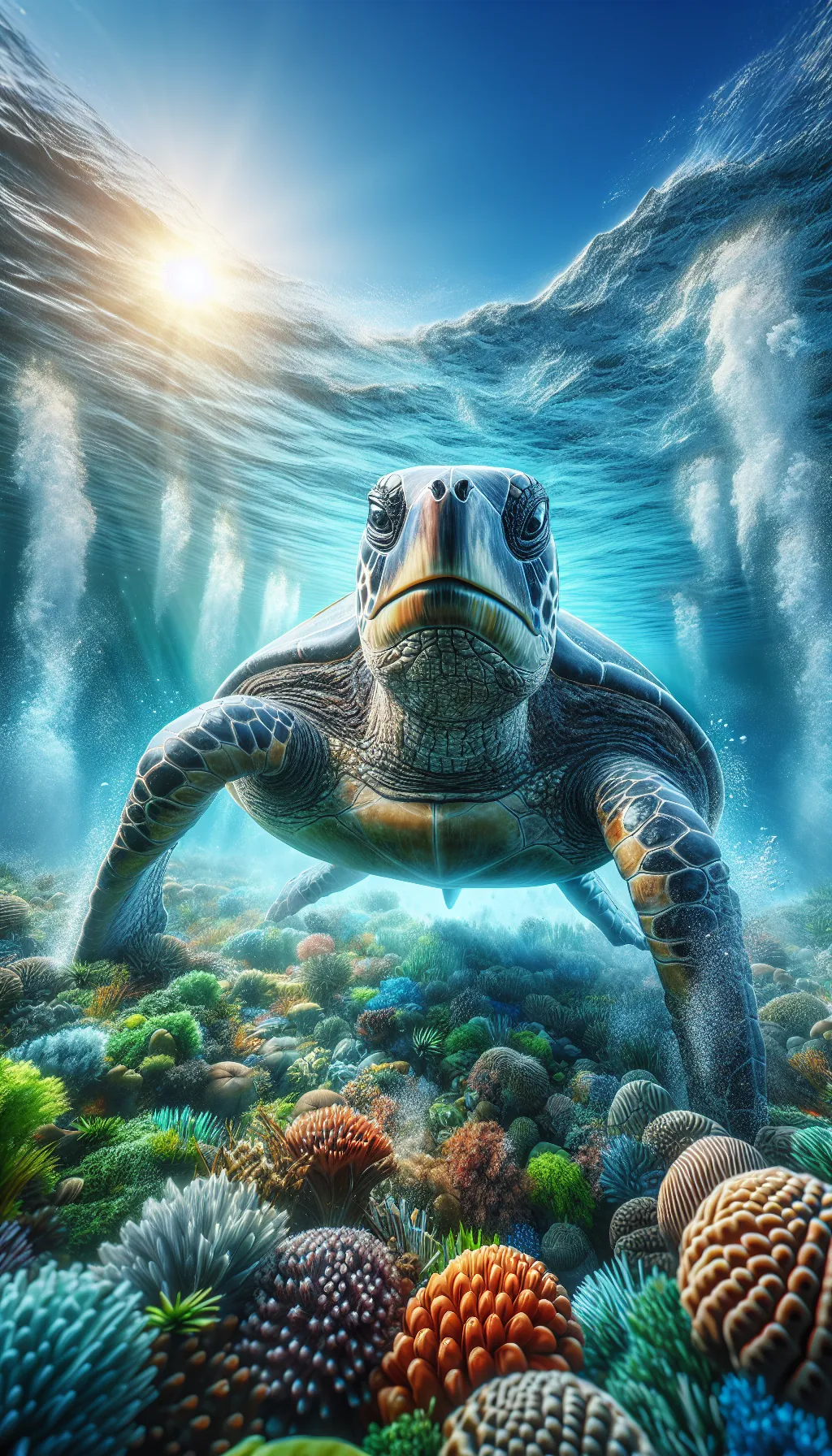The Leatherback Sea Turtle
The Leatherback Sea Turtle, also known as Dermochelys coriacea, is the largest of all sea turtle species, known for its unique leathery shell and lack of a bony shell. Their bodies are covered in a black rubbery skin, and they can weigh up to 2000 pounds and reach lengths of over six feet. Leatherbacks have a unique diet of jellyfish and are known to travel long distances in search of food.

| Leatherback Sea Turtle | |
|---|---|
| Size | Up to 7 feet (2.13 meters) in length |
| Weight | Up to 1,500 pounds (680 kilograms) |
| Speed | 22mph (35km/h) |
| Key Strength | Powerful jaws for crushing prey |
| Biggest Weakness | Slow movement on land |
| Scientific Name | Dermochelys coriacea |
| Family | Dermochelyidae |
| Habitat | Open ocean |
| Geography | Found in tropical and temperate oceans worldwide |
| Diet | Primarily feeds on jellyfish |
| Lifespan | 45 years - 50 years |

The Leatherback Sea Turtle
The Leatherback Sea Turtle, also known as Dermochelys coriacea, is the largest of all sea turtle species, known for its unique leathery shell and lack of a bony shell. Their bodies are covered in a black rubbery skin, and they can weigh up to 2000 pounds and reach lengths of over six feet. Leatherbacks have a unique diet of jellyfish and are known to travel long distances in search of food.
Fun Fact: Leatherback Sea Turtles are the deepest-diving and most migratory of all sea turtle species, known to travel thousands of miles to nesting and feeding grounds.
| Leatherback Sea Turtle | |
|---|---|
| Size | Up to 7 feet (2.13 meters) in length |
| Weight | Up to 1,500 pounds (680 kilograms) |
| Speed | 22mph (35km/h) |
| Key Strength | Powerful jaws for crushing prey |
| Biggest Weakness | Slow movement on land |
| Scientific Name | Dermochelys coriacea |
| Family | Dermochelyidae |
| Habitat | Open ocean |
| Geography | Found in tropical and temperate oceans worldwide |
| Diet | Primarily feeds on jellyfish |
| Lifespan | 45 years - 50 years |
Leatherback Sea Turtle Matchups
We use AI to simulate matchups between the Leatherback Sea Turtle and other animals. Our simulation considers size, strength, and natural predatory behaviors to determine the most likely outcome.
Leatherback Sea Turtle: Diet, Predators, Aggression, and Defensive Behaviors
What do Leatherback Sea Turtles eat?
Leatherback Sea Turtles primarily feed on jellyfish, but they also consume other soft-bodied invertebrates such as sea squirts and salps. They have sharp papillae in their mouths that help them grasp and swallow their slippery prey. Their diet consists mainly of gelatinous organisms found in the water column of the ocean.
Do Leatherback Sea Turtles have any predators?
As adults, Leatherback Sea Turtles have few natural predators due to their large size and tough, leathery skin. However, their eggs and hatchlings are vulnerable to predators such as raccoons, birds, and crabs. Additionally, some sharks and killer whales have been known to prey on adult Leatherback Sea Turtles.
Are Leatherback Sea Turtles aggressive?
Leatherback Sea Turtles are not typically aggressive towards humans or other animals. They are known for their gentle nature and non-threatening behavior. They are solitary animals that spend most of their time in the open ocean, away from potential threats or conflicts.
Do Leatherback Sea Turtles fight?
Leatherback Sea Turtles do not engage in fighting behavior with other animals. They are known for their docile temperament and peaceful existence. They are more focused on finding food, mating, and nesting than on conflict or competition.
How do Leatherback Sea Turtles defend themselves?
Leatherback Sea Turtles rely on their size, strength, and protective shell to defend themselves against potential threats. Their shell, composed of a layer of tough, leathery skin, provides them with defense against predators and environmental hazards. They can also swim quickly and dive to great depths to escape danger.
What is the biggest weakness of Leatherback Sea Turtles in a fight?
The biggest weakness of Leatherback Sea Turtles in a fight is their vulnerability to human activities and environmental threats. They face dangers such as pollution, habitat destruction, entanglement in fishing gear, and the illegal trade of their eggs and meat. These factors pose significant risks to their survival and well-being in the wild.
Fun Fact: Unlike other sea turtles, Leatherbacks do not have a hard shell but instead have a shell made of a rubbery skin with seven distinct ridges running lengthwise down their backs.
Fun Fact: Leatherback Sea Turtles are known for their unique ability to regulate their body temperature, allowing them to swim in colder waters than other sea turtle species.










